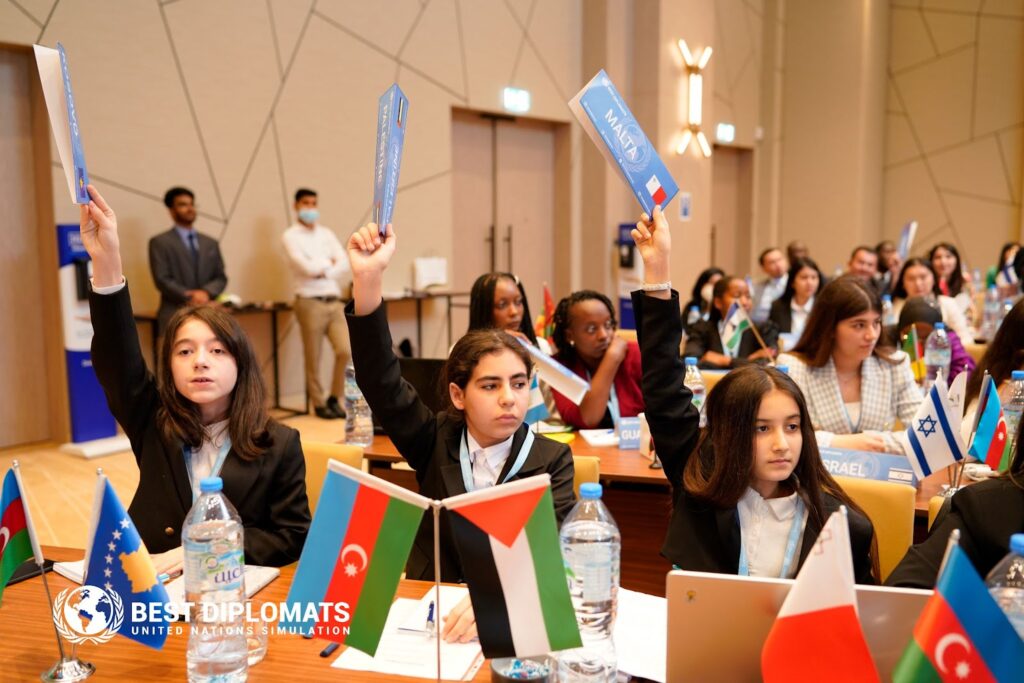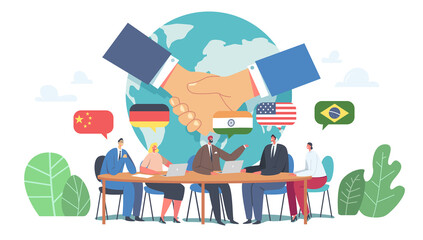Concerning politics, individuals all around the world, in various nations, regions, and communities, have divergent views. With diplomacy, parties can successfully interact with one another and comprehend one another’s points of view. According to the American Psychological Association (APA), diplomacy and negotiation are the cornerstones of international relations.
Diplomacy has a wider definition than only the conversations that take place between nations. It covers any debates that are held delicately and without inciting hostility. In this way, public diplomacy helps resolve interstate conflicts, local conflicts, and individual conflicts. Anyone who wants to pursue a career that involves international relations must know public diplomacy.
What Is Public Diplomacy
The term “public diplomacy” has evolved in the field of international relations to define aspects of those relations that take place apart from interactions between state structures. Edmund Gullion, a professional diplomat, coined the phrase “public diplomacy” in 1965. The Center for Public Diplomacy was established by a diplomat and the dean of Tufts University’s School of Law and Diplomacy, Murrow, Edward R.
The Center defines the concept of public diplomacy as “the impact of public opinion formation and foreign policy execution”. This encompasses aspects of international relations outside of traditional diplomacy, the shaping of public opinion in other nations by their governments, interactions between private interest groups in various nations, public awareness of international affairs and its impact on domestic policy, and effective communication.
Traditional Diplomacy Vs. New Public Diplomacy
Traditional Diplomacy is defined as the conduct of formal contacts between official representatives of sovereign states and is considered a crucial component of state-to-state diplomacy. In this view, traditional diplomacy comprises initiatives like student exchange programs, language training, visitor programs, cultural exchanges, and radio and television programming. To influence the broader political landscape in the “receiving” country, such actions typically focused on enhancing the image or reputation of the “sending” country.

The idea of new public diplomacy has broadened the definition of public diplomacy to include activities beyond the domain of sovereign governments. New public diplomacy aims at developing and advancing public diplomacy policies and practices for non-state actors including sub-national actors, supranational organizations, non-governmental organizations, and sometimes private companies.
The proponents of new public diplomacy have mentioned the democratization of information through new media and communication technology as a new force that has greatly increased the power and legitimacy of non-state actors in international politics.
Also Read About Diplomacy and Tact: The Essentials of Leadership In 2023
Techniques of Public Diplomacy
There are two techniques of public diplomacy, which are; Branding and Advocacy.
1) First Technique: Branding
Branding is the first public diplomacy technique. The government can improve its reputation by using branding, or cultural communication, aiming to accomplish any particular long-term policy objectives. States use branding strategies to foster a more favorable picture of themselves worldwide. In a perfect world, branding would promote consensus on a variety of topics and increase public goodwill. Long-term alliances are also maintained, and branding is used to fight misinformation from the opposition.
2) Second Technique: Advocacy
Political Advocacy is the second public diplomacy technique. It includes a range of strategies designed to encourage instant results. Although branding aims to affect long-term views, political advocacy campaigns utilize public diplomacy for immediate policy goals. Foreign publics may be persuaded to applaud or criticize their leaders. States may need to quickly persuade foreign audiences to support costly military alliance strategies.
7 Pillars of Public Diplomacy
Christopher Ross, a senior adviser to the State Department’s Office of Public Diplomacy and a former US ambassador to Syria and Algeria, has outlined seven pillars of “Public Diplomacy”. The following are;
- Ensure that the audience for foreign policy understands it as it is, not how others perceive it or express it.
- Requirement for policy explaining, demonstrating, and proving the rationality of its core principles.
- Submission of calls that are consistent, truthful, and persuasive to the international community.
- Capacity to modify calls to the target audience, whose members are continuously studied.
- Executing actions through print and broadcast media that are directed at the general public as well as narrow target groups.
- Collaborating with different partners to include new target audience representatives.
- Cooperation and continuing international exchange initiatives.
Also Read About: Top 12 Greatest Diplomats in the World’s History
The Concepts of Public Diplomacy
The concept of public diplomacy has different and numerous forms of appearances, conditioned by traditional and international circumstances. The following are some major conceptual understandings of public diplomacy:
1) Diplomacy Is the Opposite of Secret Diplomacy
Traditionally, negotiations required discretion or secrecy to function, while in modern-day public diplomacy openness is required to perform the diplomatic activity. The accessibility of information about the diplomatic activity is necessary for democratic accountability of foreign policy and its verification in the sense of parliamentary debate and ratification, also needed in new public diplomacy.
2) Public Diplomacy Promotes Domestic and International Public Relations
Public diplomacy is generally defined as any deliberate and organized attempts by an organization, institution, or government to build mutually beneficial contacts with the public of other countries and states by using the platforms of international political and economic organizations or multinational enterprises. This includes long-term, complicated interactions that build flexible but symmetrical relationships with foreign publics.

3) Public Diplomacy Is Public Lobbying
Lobbying efforts can be used to describe diplomatic activities. A modern diplomat, for example, represents and interprets the stances of his or her own country in public through public and media appearances. He reports on and comments on the media and public opinion domain in the host state and collaborate with the media and opinion representatives. He maintains contact with the public while staying within the boundaries of the defined tasks and functions.
4) Public Diplomacy Is Essentially a Propaganda
It is a truth that public diplomacy is defined by its intentionality, or its desire to convince, and does not simply consist of informing in the sense of providing objective or neutral facts. Propaganda is also defined as half-true communication intended to influence public opinion. So, public diplomacy is also used in the framework of “international propaganda,” which is regarded as national states communicating to affect the politically significant behavior of citizens of other countries and nations.
5) Public Diplomacy Performs Function of Cultural Diplomacy
Public diplomacy does not just serve the purpose of foreign policy rather it assumes the role of cultural diplomacy and takes on the responsibility of carrying out foreign cultural policy and fostering cross-cultural cooperation, understanding, and communication.
Also Read About The Significance of Cyber Diplomacy in the 21st Century
Learn Public Diplomacy With Best Diplomats
To conduct international relations, diplomacy is a very crucial component. Countries use different types of diplomacy to maintain good and friendly ties with the regional and international systems. Best Diplomats is an international organization providing excellent opportunities to learn different types of diplomacy and effective ways to become a diplomat. You can grab this opportunity by registering yourself with the best diplomats.

Register Yourself With the Best Diplomats!
Conclusion
Public diplomacy involves not only government initiatives rather non-state actors as well, in the areas of culture, science, education, and public awareness as well as the development of content that advances a nation’s interests abroad by educating and persuading audiences abroad.
Public diplomacy now has broader objectives, and a wider range of specific diplomatic forms, and some of its execution strategies take longer to take effect. These are the public diplomacy characteristics that make it necessary for us to improve the assessment of its implementation impact while it is being carried out, to timely adjust the path and execution of public diplomacy strategies, decrease resource waste, and increase diplomatic effectiveness.
FAQs
What is the objective of public diplomacy?
The objective of public diplomacy is to bring actors to the negotiating table so they can communicate respectfully without any hostility and respect one another’s different points of view.
Why public diplomacy is essential in International relations?
In international relations, public diplomacy is an essential component of international and regional communication. Governments all across the world frequently employ public diplomacy as a powerful instrument to foster goodwill among the populations of neighboring nations.
Is Public diplomacy different from traditional diplomacy?
Yes, Traditional diplomacy focuses on relationships between state actors and other international actors. While on the other hand, public diplomacy engages the broad public of foreign countries and more specialized informal groups, organizations, and people.
What are the tools of public diplomacy?
Public diplomacy tools are used to influence the public opinion of the citizens of other countries in the interest of their own country. The chief tools of public diplomacy are; cultural exchange, publications, radio and television, motion pictures, the internet, and social media.
What is the difference between public diplomacy and cultural diplomacy?
Public diplomacy involves official government actions which use culture as a medium or means to interact with the audience at a wider level. Whereas cultural diplomacy is one of the kinds of public diplomacy which is an exchange of ideas, art, and information between states and their people to enhance mutual understanding and interest.





